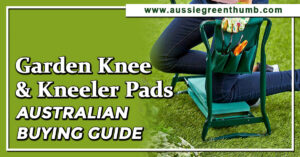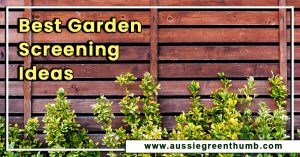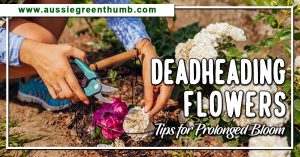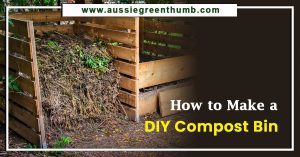Are you torn between going for seeds vs seedlings? Sowing seeds and planting seedlings is a much more cost-effective way to fill your garden than buying mature plants.
OK, so if you’re looking for instant impact, you’re not going to get it from seed sowing, or even seedlings, but that’s part of the joy of gardening. If you’ve got stuck in the habit of buying every plant from the garden centre you could be spending around $20 for a small clump of annuals.
They look incredible as soon as you buy them but begin to fade after a couple of weeks. This article aims to teach you everything you need to know to get started with seeds and seedlings.
More...
Sowing Seeds vs Planting Seedlings: Which is Better?
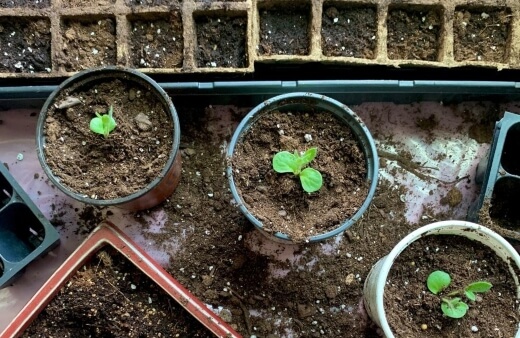
I’m asked this all the time, and there’s the true gardener in me that wants to say “seeds are cheaper, more fun, and easy to grow”, but then I remember that everyone has different considerations.
For instance, if you’re starting from scratch, you might not have the space, or the tools to grow seedlings properly, and sometimes limiting your plants can be useful.
When you grow from seeds, most seed packets come with anywhere from 20-5000 seeds packed into their little paper envelopes. For small city gardens, there’s no way you’ll need 5000 of anything, and the same you’ll need to grow them is obviously inaccessible.
- Cost - Sowing seeds is much more cost-effective than buying mature plants, or seedlings. For $3 you can buy 20 tomato plants, ready to sow and you’ll harvest them at the same time as someone who bought their tomato seedlings at the same time for $3 per plant.
- Space - Plants grown from seed need time and space to germinate. Germinating seedlings need light, water, and plenty of compost too, so you’ll have to have a few windowsills or even a greenhouse to get them started.
Seedlings, on the other hand, are ready to plant out straight away in most cases. Once you buy a seedling from the local garden centre, you can dig a hole in the garden, or fill a pot with compost, and pop your seedling straight in there.
You’ll get less for your money, but you’ll have young plants that can flower in as little as 2-3 weeks for some species.
Pros and Cons of Seeds vs Seedlings
Germinating Seeds
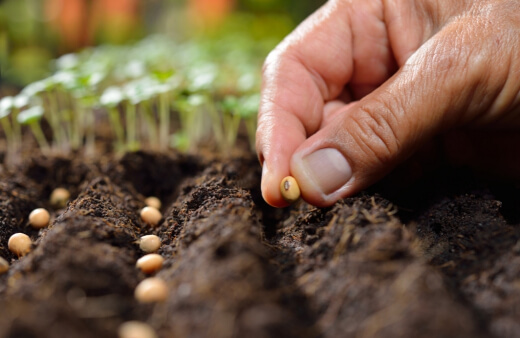
Pros
- Can have complete control over what goes into the plant. This is particularly important if you are growing vegetables and want an entirely organic veggie garden. If this is the case then growing from seeds is a must.
- Can get many plants from the one packet.
- May be able to obtain the seeds from friends plants or other plants you have access to. However, many shop variety seeds do not grow very well if at all due to the growth processed and chemical treatment they receive.
- Small cost output can equal big return.
Cons
- No idea how many plants you will get.
- Many seedlings may sprout close together requiring transplanting.
- Longer time for plant to grow to the size you are after.
Planting Seedlings
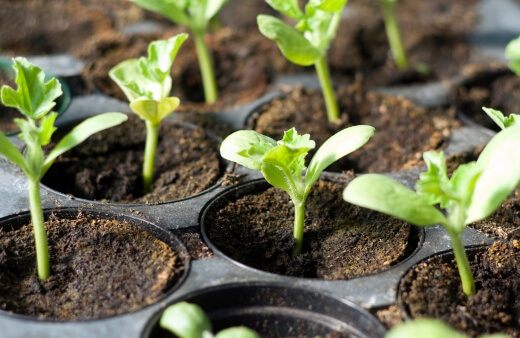
Pros
- Complete control over where the seedlings grow and how close together they are.
- Shorter time between planting and maturity.
- Can do everything at once, planting, pest control, soil prep, staking etc.
Cons
- More Costly
- Don’t know what has gone into growing the plant to that point
- More chance of less plants if seedlings die
There are some good pro’s and con’s for both methods. Seedlings are probably the easier option but you could argue what you get for the extra time spent with seeds is worth it.
What may be a happy medium is to grow seedlings from seeds in some seedling trays, then plant your own seedlings into your vegetable garden plot. This again is a little more time consuming but it can mean that you get more of the pro’s of both and less of the con’s.
It also is a good way to keep your veggie crop continually growing as you can harvest some seeds from your first batch of plants (from veggies that produce them in easily harvested form) and get some seedlings growing while your mature plants produce their crop.
And then some plants are very difficult to grow from seeds yourself or hard to actually acquire seeds for. Ultimately whether go seeds vs seedlings depends on what plant you are hoping to grow and that only comes from experience or asking people for advice specifically!
How to Germinate Seeds
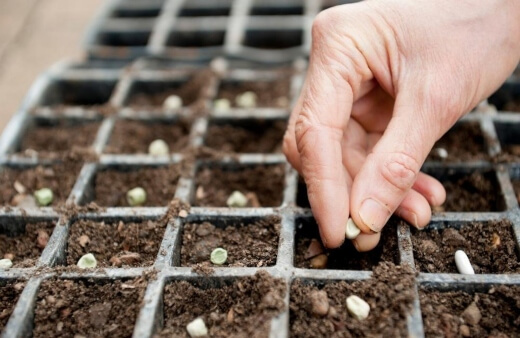
How to Sow Seeds
The start to the gardening year is the day you sow your first seeds. For me, that’s usually the first week of spring. There’s still a chill in the air, but there’s a promise of summer to come, and plenty of time to get things ready for the garden.
Best Compost for Sowing Seeds
Before you begin, you’ll need to prepare a growing medium (soil or compost). While most gardeners will tell you that you need a “finely sieved garden compost” or something specific like that, the reality is that most seeds will sprout in any soil.
For example, carrots are notoriously picky about their soil, but last year we did an experiment and sowed carrots in some basic soil dug up from the garden. They weren’t perfect, but they germinated from seed in about a week.
Seed Compost or Sieved Compost; What’s Better for Seedlings?
You can technically germinate seeds in any compost, but there is a science to finding the best compost for different seedlings. Most seeds can germinate on a paper towel if it’s kept wet, so nutrients aren’t that important.
What you need is what we call ‘moisture retentive compost’. This just means compost that holds moisture but doesn’t get too damp. To achieve that, we use moisture-retentive materials, like compost, with free-draining materials like sandy soil.
That means that seeds never sit too long in old water, but never dry out completely. The compost gives them a head that after they germinate, and somewhere for their roots to grow through.
To know exactly what is in the compost your using, make it yourself. See our buying guide on the best compost bins available in 2024.
Compost Additives
There are four common compost additives that are used to help with drainage and reduce the weight of seed trays:
- Vermiculite
- Perlite
- Horticultural grit
- Sharp sand
Vermiculite and perlite are very similar materials designed to help drainage in pots. Both are natural micaceous pellets too (the crystal structures that make clay).
Vermiculite adds nutrients to the soil, which makes it great for tropical plants, while perlite is effectively inert, meaning it has no notable nutritional impact and is there purely to improve drainage.
Sharp sand and horticultural grit are cheaper alternatives that will last longer, especially if you’re sowing seeds directly in the ground. It’s important to use horticultural grit rather than just ‘grit’ though, as grit can damage soil fertility.
Equally, using builders’ sand instead of sharp sand can create highly alkaline conditions that quickly kill plants.
When to Sow Seeds
Always check the packet before you sow seeds, there will be a table that looks something like this:

All companies have different colour coding, but usually, the top row is the month to sow seeds, and the bottom row tells you when it will flower (or be ready to harvest for veggies).
While you should always check instructions for different plants, here’s a basic guide to different types of plants to give you a better idea of when to sow seeds:
- Tender annual plants (that grow from seed, then flower, then die, in a single year, should usually be sown in spring.)
- Hardy annual plants (like annuals, but their seed will usually regrow in the same position the next year) should be sown in autumn as the cold helps them germinate in spring.
- Biennial plants (plants that flower in their second year) should be planted in late summer for flowers the following year.
- Perennial plants (flowers and herbaceous plants that come back every year) can be sown all year round indoors. To sow them directly outdoors, check individual packets.
Where to Sow Seeds
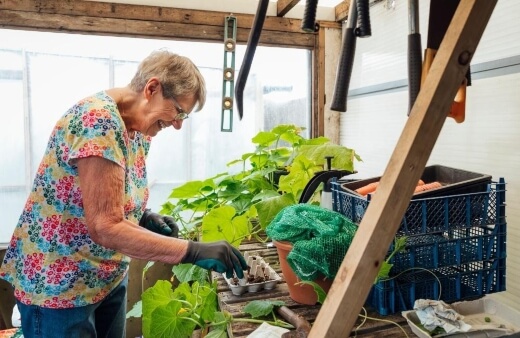
Seeds should always be sowed somewhere where temperatures are adequate. Every seed is different, with some seeds even needing a period of freezing to help them germinate. In most cases though, seeds like temperatures around 10-18°C to germinate most efficiently.
Choose somewhere that your seeds can grow into healthy seedlings, and won’t get in the way for the next month, as they can take a long time to be ready for planting outside.
If you have a greenhouse, or a cold frame (a box, or container with a glass/Perspex lid to help warm seeds in spring), that will be the ideal temperature to germinate seeds in Australia from late winter, into early spring.
If your seed packet suggests sowing undercover, you’ll need a propagator, or to save some money you can cover pots and seed trays with cling film or plastic lids. This helps increase humidity, so seeds are in cosy warm environments while they sprout.
Tools You’ll Need for Sowing Seeds
There aren’t many tools you need for sowing seeds, and there are plenty of free hacks you can use, using materials you have lying around the house, but the tools below will make sowing seeds infinitely easier:
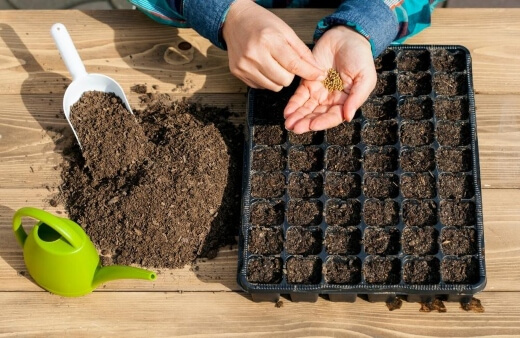
Different Types of Seed Pots and Trays
Most common types of seed sowing containers:
- Seed trays
- Seed module trays
- Propagator
- 5cm pots, or 9cm pots
Some seeds like to be sown thinly (lightly sprinkled) while others can be sown quite generously like grass, which we simply cast out over the soil. Seed trays are perfect for sowing seeds thinly, or in sparse rows.
Seed module trays are a great space-saving way to sow up to 40 seeds at a time. They are usually made up of individual pots, all connected as one tray. For larger seeds like peas and beans, they are a great way to start seeds indoors without needing loads of space.
Propagators and individual pots are great for starting larger plants like biennials or perennials that like to form full root balls inside their pots before being moved.
Seed Sowing Tools
Useful tools for sowing seeds include:
- Dibbers are one of the most useful, but least known tools to new gardeners. If you’re new to sowing seeds, dibbers are the perfect tool to push small holes into the compost, and when you wet their tips they are a precise way to drop seeds into each pot or module.
- Garden sieves (also called ‘riddles’) are used to remove big chunks from compost, which helps seedlings get better contact with the soil.
- Watering Cans are obvious, but find one with a gentle spout so you don’t flush your seeds away.
How to Grow Plug Plants (Seedlings)
Plug plants are often better known as seedlings. They are termed plug plants due to the shape of the seedling, and its roots, when pulled out of the punnet and how they resemble a “plug”.
Many annuals are sold in nurseries as plugs and these include bedding plants such as petunias, pansies, marigolds and the like plus vegetable seedlings as well.
Gardeners use plugs for two reasons;
- They are often much easier to cultivate than traditional seed raising, and
- They give the gardener more control over their planting arrangements than sowing seeds. However, while they may have some benefits over their seed counterparts they do have some drawbacks as well.
Firstly, they’re not cheap, especially if you’re planning to buy a bucketload. Plus, when planting plugs they can suffer from transplant shock – a condition that makes the seedling keel over until they're comfortable in their surroundings.
The good news is that both drawbacks can easily be overcome so here are some gardening tips to get you growing plug plants successfully.
Growing Your Own Plug Plants
If you want to grow plug plants cheaply then you have to do it yourself. Buying them from the nurseries in bulk is going to cost a small fortune and if you plan to do that every year then you’re throwing away money that could be used in your garden for other purposes.
The best time to start is in winter when all your plants are dormant and you have heaps of time on your hands. You will need a cold frame or greenhouse to keep your plug plants warm, some clean plastic punnets (you can reuse these provided they have been cleaned well with bleach between plantings), some seed raising mix and a small mist sprayer.
Fill the punnets up with the seed raising mix and then tap down to remove any air bubbles. This should now give you some clearance of a few millimetres at the top. Lay a few seeds in each plug and when they’re all done cover with a light layer of the seed raising mix.
Spray with the mister and then label before placing into the cold frame or greenhouse.
Over the next few weeks monitor your plug plants as they begin to grow. Once the first few leaves break out of the ground they can be misted with some fish emulsion to help provide some much needed nutrients but this should probably only be done every 2 weeks or so.
Transplanting Seedlings Outdoors
Once your plug plants have grown two sets of leaves, at least, and the ground has begun to warm up with the first few weeks of spring you can begin transplanting your seedlings out into their garden beds.
Once you plant your plugs they are no longer safe and secure and are open and available to a heap of problems and attacks – none more discouraging than finding they were the meal of some garden pest. However, there are ways to protect your plugs from snails and even woodlice. Barriers are much more effective than chemicals.
Transplanting Shock
Another evil that your plug plant may suffer from is transplant shock. It is one of the most common reasons why new plants die. Plugs will go into shock once they are taken from their comfortable punnets and placed into their new location and the key is helping them recover from it. Giving them another dose of fish emulsion will certainly help as will covering them with a garden cloche, mainly overnight.
Amending your soil prior to planting also offers your plug plants a greater chance of success and well-rotted compost and manures can be an incredible welcoming party to any new seedling.
The first two weeks of any seedling's life, after being transplanted, is the most critical time for them. Once they’ve passed this time period their chances increase and they should continue to grow quite happily in your garden and provide the benefits you were hoping to achieve.
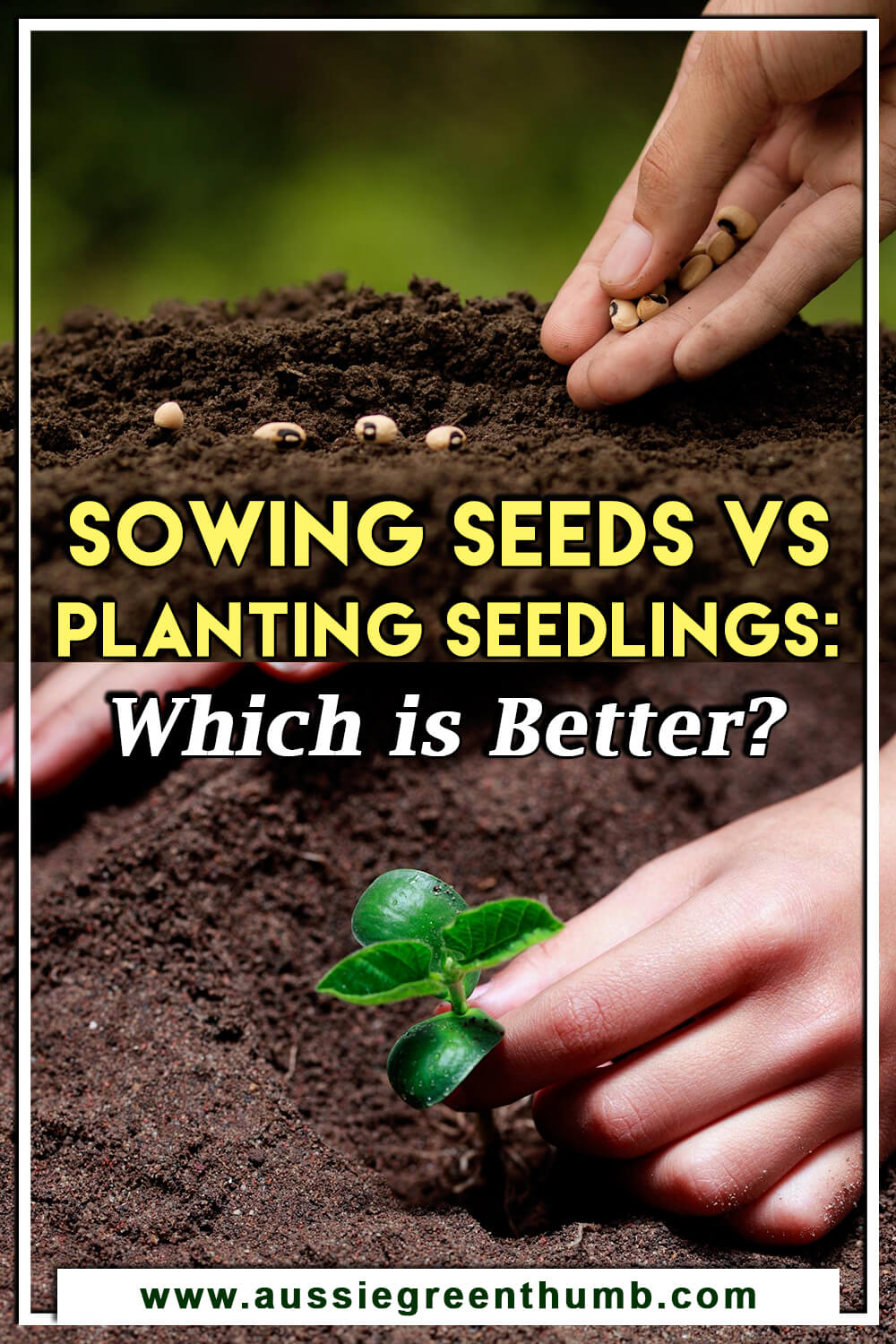
Now You Know the Difference Between Sowing Seeds vs Planting Seedlings
Planting seedlings straight into the garden is much easier than sowing seeds, and just needs a handful of compost when you pop them into their final position to help give them a head start.
However, when it comes to choosing between seeds and seedlings there is so much fun to be had with sowing seeds and watching young plants germinate from nothing that, for me, its seed sowing every time.
Either way, I hope this guide helps you understand some of the language that gardeners use when they’re writing about sowing seeds and planting seedlings.
Like any hobby or profession, you learn the language as you progress, but for newcomers, it can be off-putting. Good luck with your new seed sowing adventure!
Published on May 1, 2022 by Gary Clarke
Last Updated on February 21, 2024

